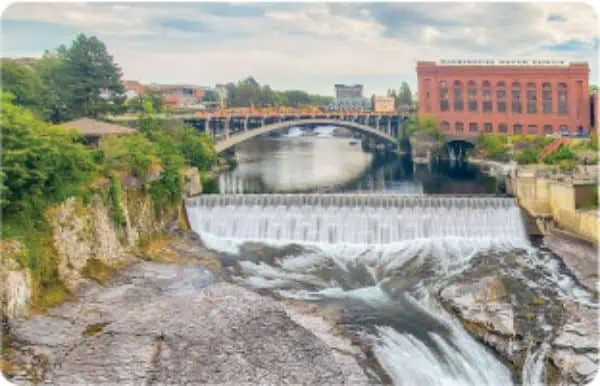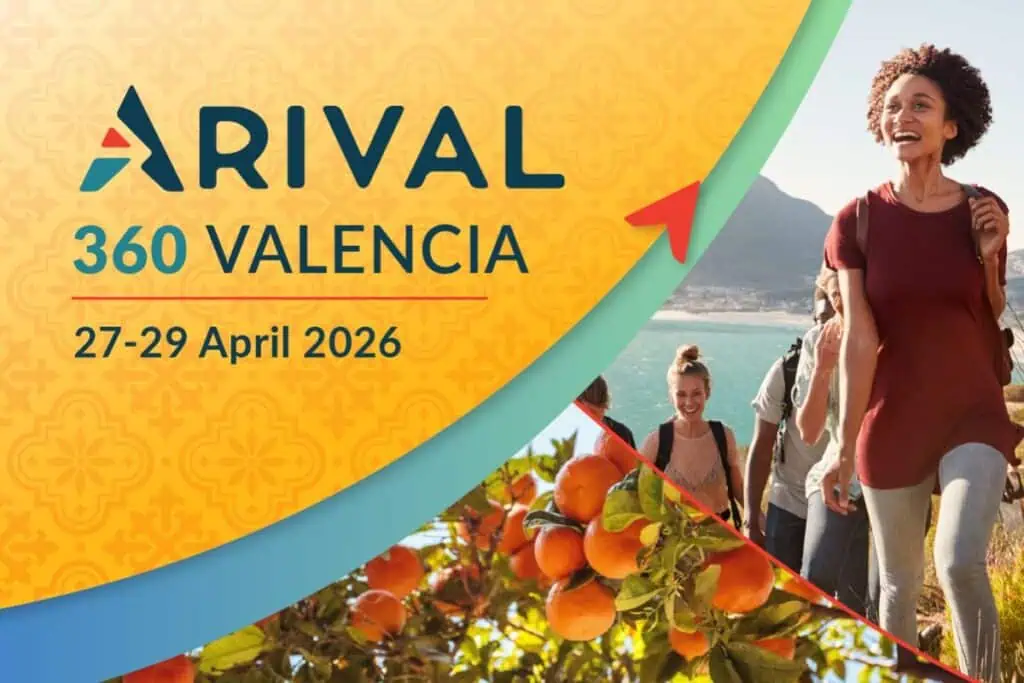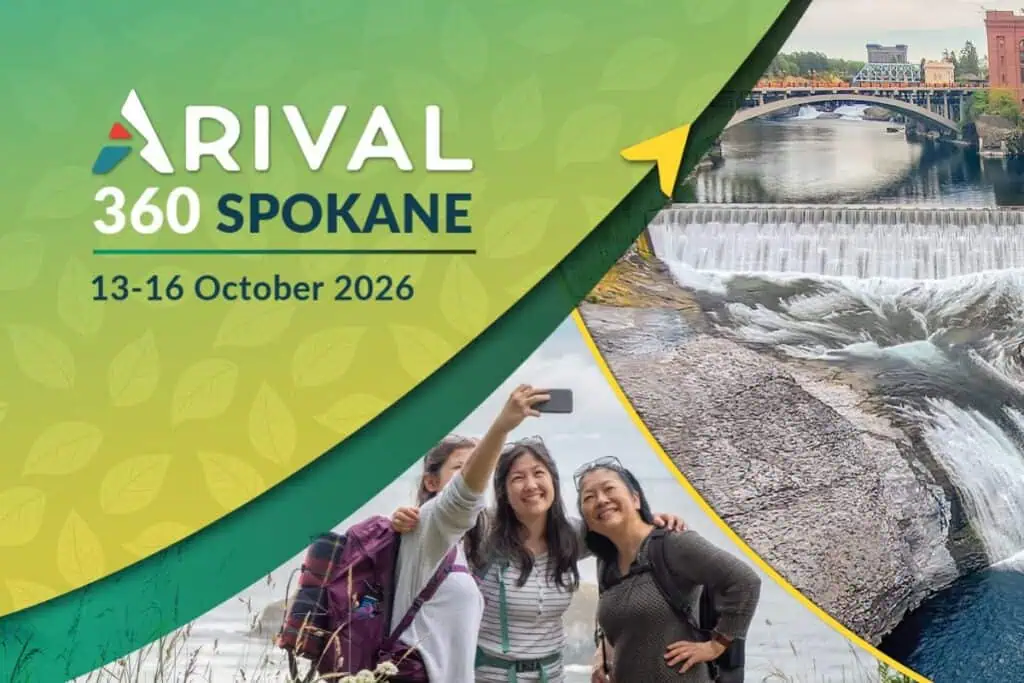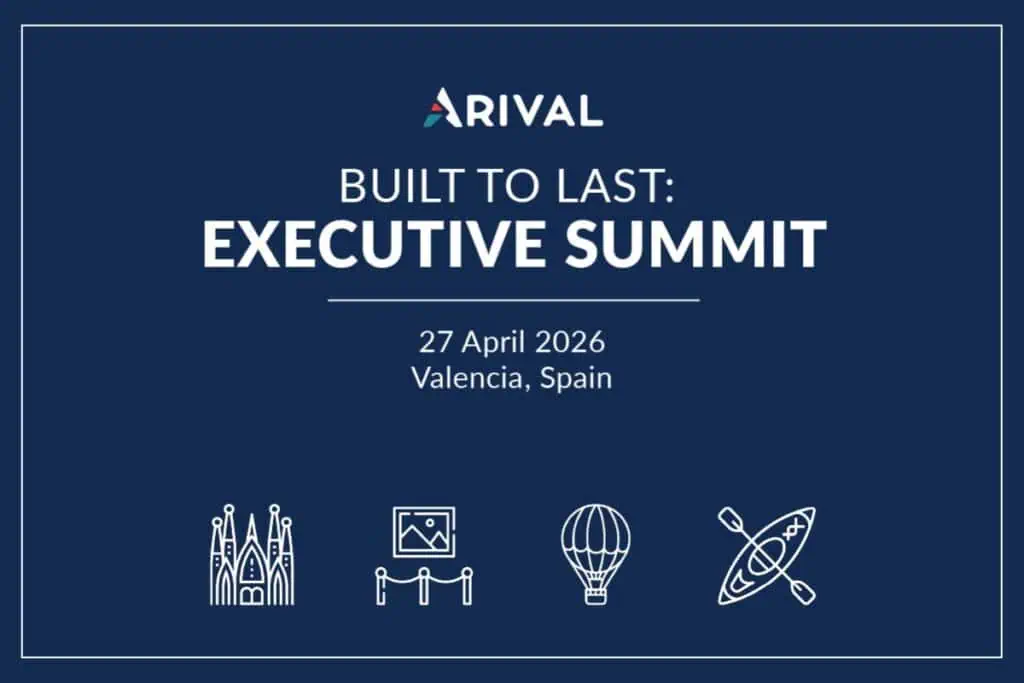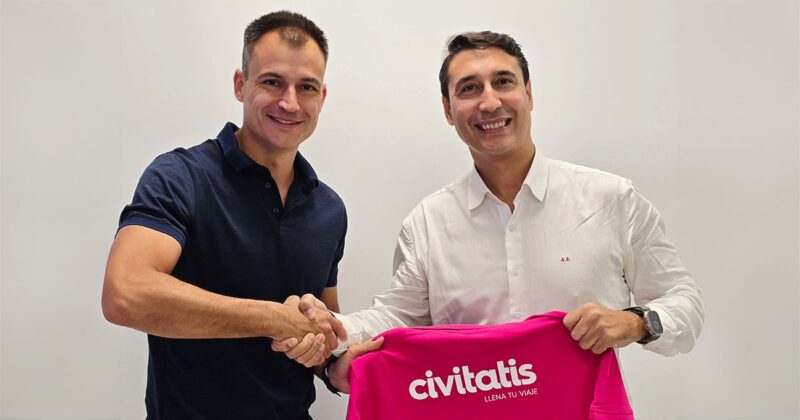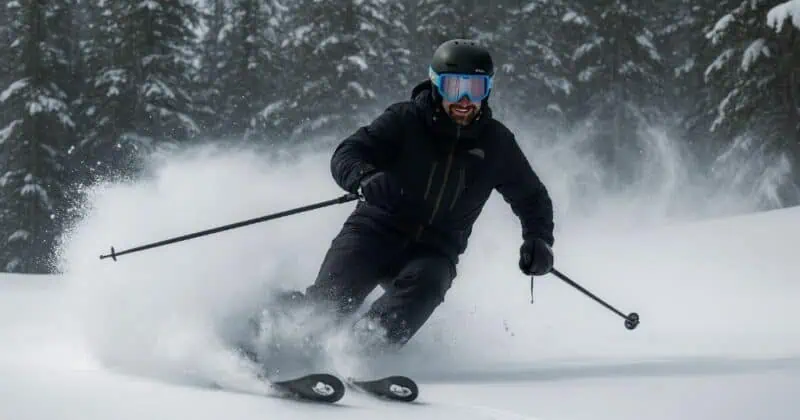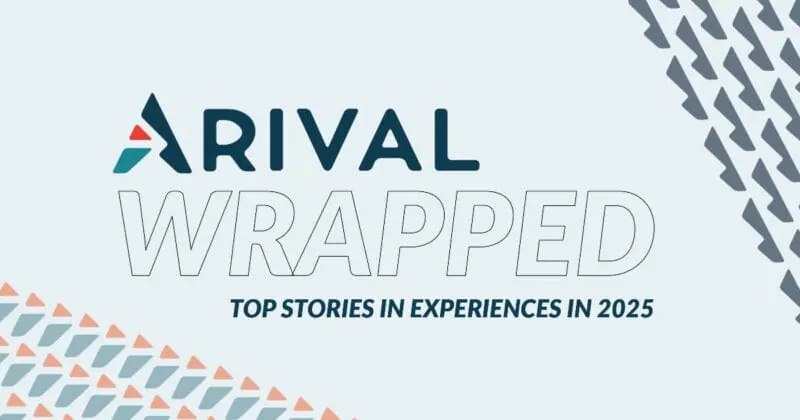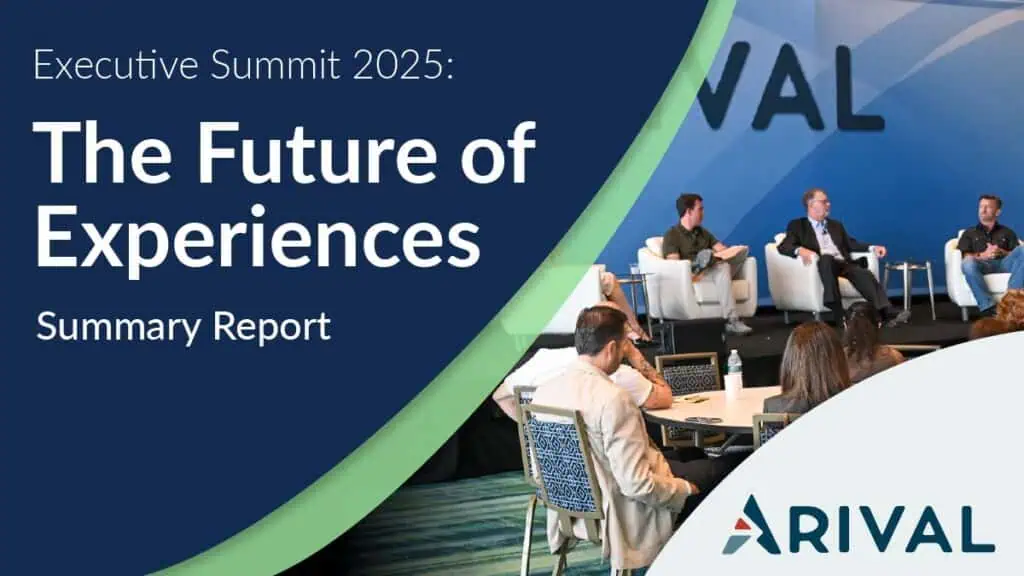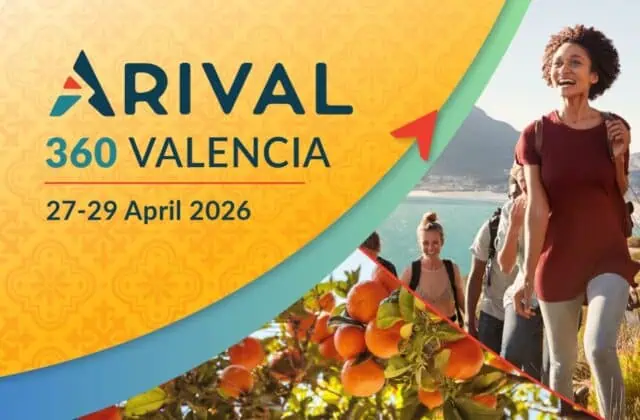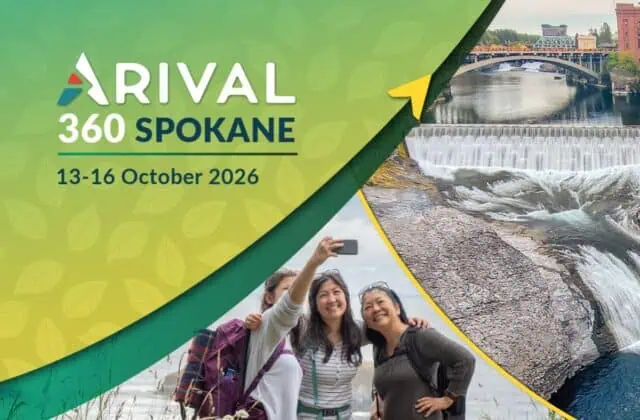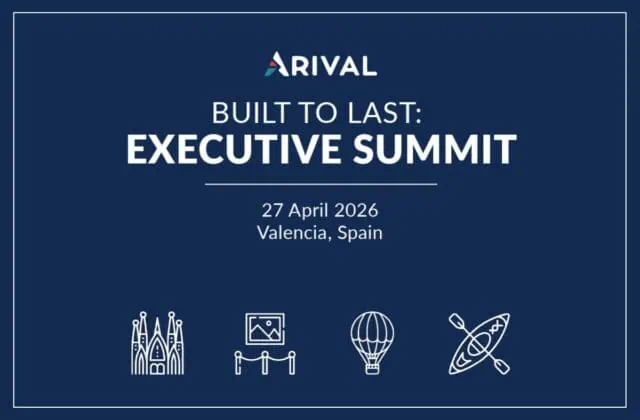In a market where demand is increasingly driven by digital expectations and immediate gratification, your technology stack isn’t just a back-office tool, it’s the backbone of your business.
From discovery to delivery, the way customers interact with your brand is shaped, accelerated, and judged by the quality and connectedness of your tech environment.
Yet, too many operators are still patching together platforms or relying on legacy systems that weren’t designed for today’s omnichannel traveller. And with the proliferation of tour operator tech from online booking systems to AI-enhanced solutions, it’s easy to become bogged down by every shiny new thing. So, how do you navigate the increasingly complex travel technology landscape and future-proof your tour or attraction business with a tech stack that works for you, not against you?
As is always my advice, let’s start with strategy, and then break down the core environments that matter.
Here’s what we’ll cover:
- What is a Tech Stack?
- Start with Strategy
- The Most Important Tech Decision
- Sales & Distribution Technology
- Customer-Facing Operations & Guest Experience
- Tour Operations & Resource Optimization
- Payment Systems
- Marketing Technology
- CRM & Customer Success
- Reporting & Business Intelligence
- Reduce Complexity & Contain Costs
- Why Investing in Your Tech Stack Matters
- Final Thoughts
What is a Tech Stack?
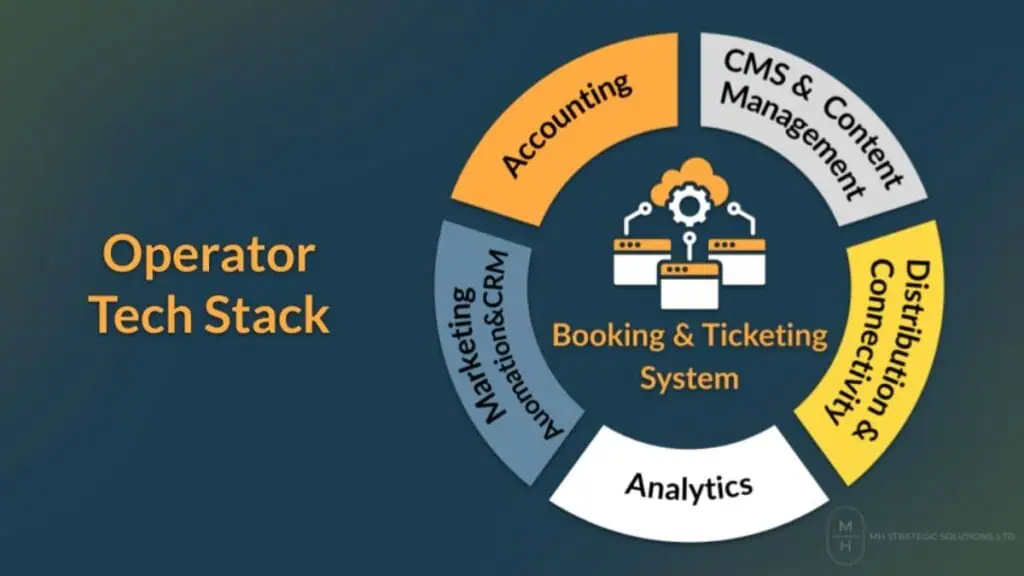
A tech stack is a combination of software tools used by operators to manage and streamline operations, to enhance the guest experience, and to generate and optimize revenue.
The hospitality industry was one of the earliest adopters of digital technologies and has remained at the leading edge of innovation ever since. Technology now forms the foundation upon which any successful operation is built, and tours, activities and attractions are no exception.
Tech for tour operators has developed rapidly over the last several years, with innovative companies developing tech tools for tour operators, ranging from tour operator software for online booking and attractions ticketing solutions to software solutions for operations, marketing and guest communication, to most recently, the development of AI technology apps and features.
Your tech stack is the result of how you put all these pieces together, whether through an “all-in-one” software solution, a carefully selected collection of purpose-built tech tools, or a little bit of both.

13-16 Oct 2026
Insider Pro Access Members Save 20%
THE event of the year for creators and sellers of destination experiences to connect, learn & grow.
Get YourSuper Early Bird Ticket Through 13 January!
Start with Strategy: Map the Full Customer Journey
Before investing in platforms and tools, start with understanding your customer journey, fully.
That means more than just the point of booking. It starts with search and discovery, continues through purchase, confirmation, pre-arrival communication, the on-site experience, and extends all the way to post-visit engagement.
Ask yourself:
- How do customers find you?
- What barriers exist between interest and booking?
- How seamless is their arrival, entry or check-in, and time during their experience with you?
- How are you following up after their visit to build loyalty or generate advocacy (such as reviews)?
Your tech stack should be designed to support this entire lifecycle. The tools you choose should work together to remove friction, enable personalisation, and deliver a consistently excellent guest experience at scale.
The Most Important Tech Decision: Your Reservation System (Restech)
Once your strategy is taking shape, consideration for one piece of technology will start to become central to your plan and will define how it comes to life. This integral piece of tech will influence every other part of your tech stack and operation, it’s your online booking or ticketing system, also known as your reservation system, or restech.
Your restech is the central nervous system of your business. It powers availability, pricing, capacity, inventory, connectivity, business intelligence, access control, team management, and so many more business critical aspects. Get this choice right, and the rest of your stack can thrive. Get it wrong, and you’ll spend years patching over limitations.
Yet in 2024, Arival research found that nearly three in five tour operators globally still lack a modern reservation system. That’s not just a tech gap, it’s a revenue, guest experience, and scalability gap.
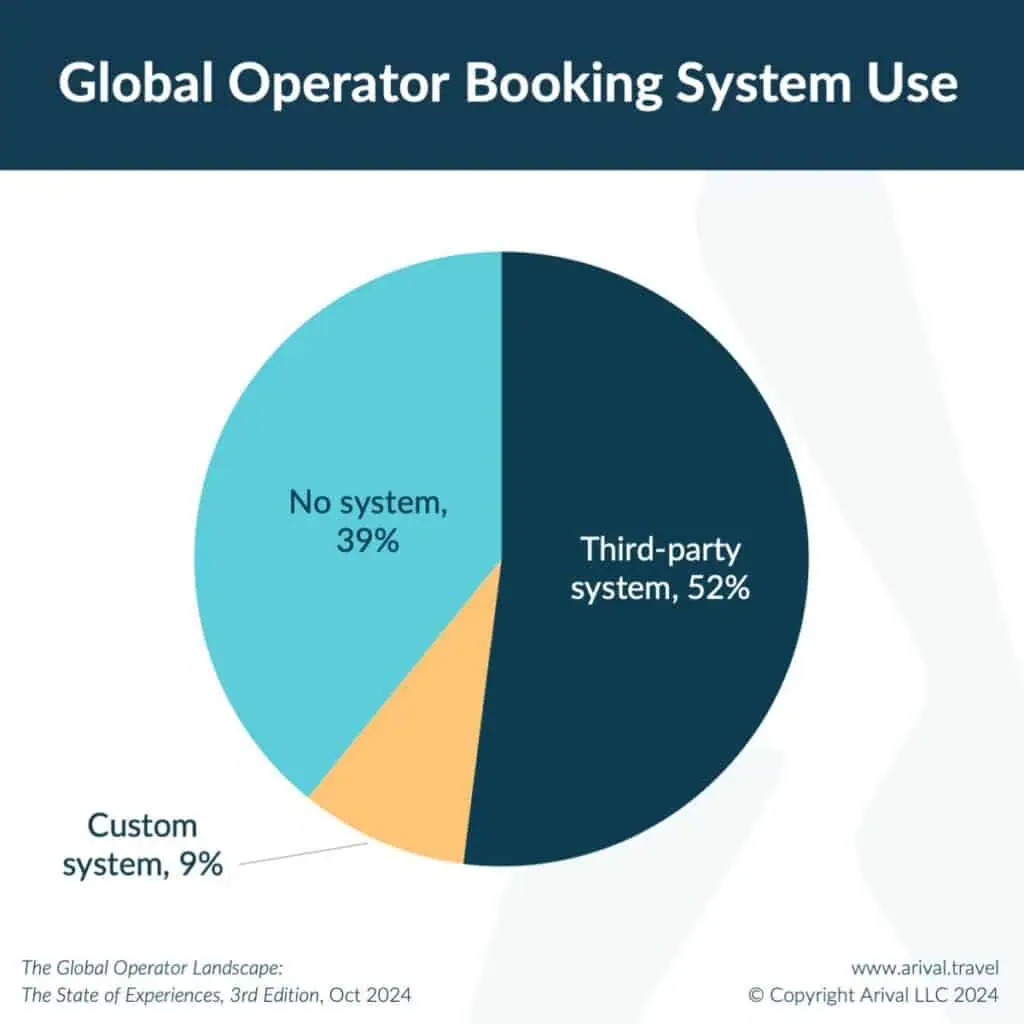
Streamlining Bookings
Here’s an example of what a future-ready restech should enable:
- Real-time inventory management across all channels.
- Multi-channel sales integrations via APIs, not just iFrames or offline feeds.
- Capacity controls and timed-entry options for attractions, supporting dynamic guest flows.
- Modular flexibility, so you only pay for what you need and scale features as you grow.
- Robust reporting, not just booking logs.
Your restech shouldn’t dictate how you run your business, it should adapt to your model. It should empower you to experiment, iterate, and grow without being boxed into someone else’s way of working.
Crucially, a great reservation system also enables connectivity, with branded, mobile-responsive booking experiences that align with how modern travellers behave and book. This improves conversion, lowers reliance on third parties, and builds brand equity.
If your current system lacks these capabilities, or you are compromising because of your restech, it may be time to consider a new one. It’s not a small task, and in most cases one which is put off for a multitude of reasons such as cost, time, effort, but the real cost impact of staying with the wrong system is higher in the long run.
Think of your reservation system as your tech stack’s keystone: everything else depends on its strength and flexibility.
Sales & Distribution Technology: Go Beyond Booking Systems
A booking system is not a distribution strategy.
Too often, I see operators rely on a single channel or plug into online travel agencies without controlling the journey or margin. Your sales environment should be built on connectivity, flexibility, and diversification.
Multi-Channel Sales & Partner Integrations
Look for partners and platforms that offer:
- Real-time API connectivity to online travel agencies (OTAs), destination management companies (DMCs) and other third party resellers as well as your own direct channels.
- Dynamic packaging and pricing, allowing you to bundle or tier offers across experiences.
- Affiliate and B2B tools so trade partners can book you without endless back-and-forth emails.
- Channel management tools to reduce the time you spend managing individual distribution channels.
Something I tell all my clients (and my top tip for any operator!), you don’t need a hundred sales channels, you need the right few, well-connected and revenue-focused ones that are serving your source markets. Everything else is just noise.
Editor’s note: Get more insights from Martin Harlow about sales and distribution, from OTAs to channel management to API connectivity, in his article on Mastering the Experiences Industry.
Customer-Facing Operations & Guest Experience: Automation with a Human Touch
The operational environment is where automation meets service.
Pre-arrival messaging, digital waivers, capacity management, timed entry, these aren’t just efficiencies, they’re expectations. But automation doesn’t mean impersonality. When done right, tech enables staff to focus on what matters most — delivering memorable experiences.
Automating Guest Management
Essential components here include:
- Mobile-first check-in and ticketing solutions.
- Capacity-aware scheduling software to avoid bottlenecks and overbookings.
- Integration with hardware, think access control gates, QR scanners, and POS systems that ‘speak’ to your booking data.
Streamlined ops lead to happier guests and better reviews. Both feed your sales engine.
Tour Operations & Resource Optimization: Ensuring Your Guides and Equipment are Ready
A smooth backend operations system is essential to seamless delivery of your experiences.
Streamlining logistics, improving workforce efficiency, scheduling staff and guides, and managing resources (such as boats, bikes and buses) are all essential to an effective operations software system. Digital solutions can reduce operational inefficiencies and enhance your overall service quality.
Staff Scheduling & Workforce Coordination
- Shift management and guide scheduling tools help simplify employee and contractor tracking and scheduling, and optimize assignments based on demand.
- Payroll integration tech simplifies the payroll process to help everyone paid on time without taking too much of your time.
Equipment & Inventory Tracking
- Digital inventory systems and real-time inventory tracking can help you monitor tour equipment and vehicles to prevent overbooking of resources.
- Predictive maintenance tools can reduce downtime and improve cost efficiency by helping you manage maintenance schedules of your equipment and vehicles.
Effective tour operations and resource management tools can save significant time and money while ensuring your experiences start off smoothly every time.
Payment Systems: Frictionless, Secure, Global
The best payment systems are invisible.
Whether it’s Apple Pay at the gate or Klarna-style buy-now-pay-later options on your website, guests expect flexibility. Meanwhile, you need transparency, clear reconciliation, real-time transaction tracking, and settlement flows that don’t tie up your cash.
Secure Payment Processing & Financial Management
A smart payment environment includes:
- Secure digital payments which enhance guest trust and reduce operational friction.
- Multi-currency support with automatic conversion.
- Integration with your CRM and booking engine for single source of truth reporting.
- Tokenization and stored credentials for upsells and returns.
Your payment infrastructure should be as guest-friendly as it is finance team friendly.
Marketing Technology: Let Data Drive the Conversation
Marketing is no longer guesswork, it’s a data game.
Your marketing tech (martech) stack should connect seamlessly to sales and CRM systems, empowering you to target, personalise, and convert across multiple touchpoints.
Digital Marketing Technology
Look for:
- Social media & paid advertising automation to maximize your ad effectiveness and return on investment (ROI).
- Unified customer profiles that merge web behaviour, bookings, reviews, and email engagement.
- Segmentation tools to craft tailored journeys for locals vs. tourists, groups vs. individuals.
- Attribution tracking so you know what channels actually deliver results.
- Bonus: AI-powered customer insights: Some booking platforms and marketing tech now offer predictive analytics to allow for personalized tour recommendations. Use AI-driven personalization tools to increase engagement, bookings and customer satisfaction.
No more “spray and pray.” Your marketing should be measurable, manageable, and magnetic.
Go deeper on digital marketing with Arival: Check out these resources on digital marketing in 2025, AI in travel marketing, tour operator marketing and the latest Arival report on The State of Digital Marketing to level up your tourism industry marketing knowledge.
CRM & Customer Success: Relationships at Scale
A good customer relationship management (CRM) system doesn’t just store contacts, it unlocks insights.
Especially for repeat business, trade relationships, and partnerships, a CRM is your command centre. The right setup supports customer success teams with full visibility of every interaction and helps you anticipate needs, not just respond to them.
Customer Relationship & Engagement Solutions
Ensure your CRM can:
- Integrate with your booking, ticketing and sales platforms (many booking system platforms include a CRM component).
- Automate customer communication systems including post-visit guest communication, feedback collection, review requests, and loyalty offers.
- Support B2B pipelines with tools for managing key accounts, contracts, and renewals.
Your CRM should grow with you, not box you in.
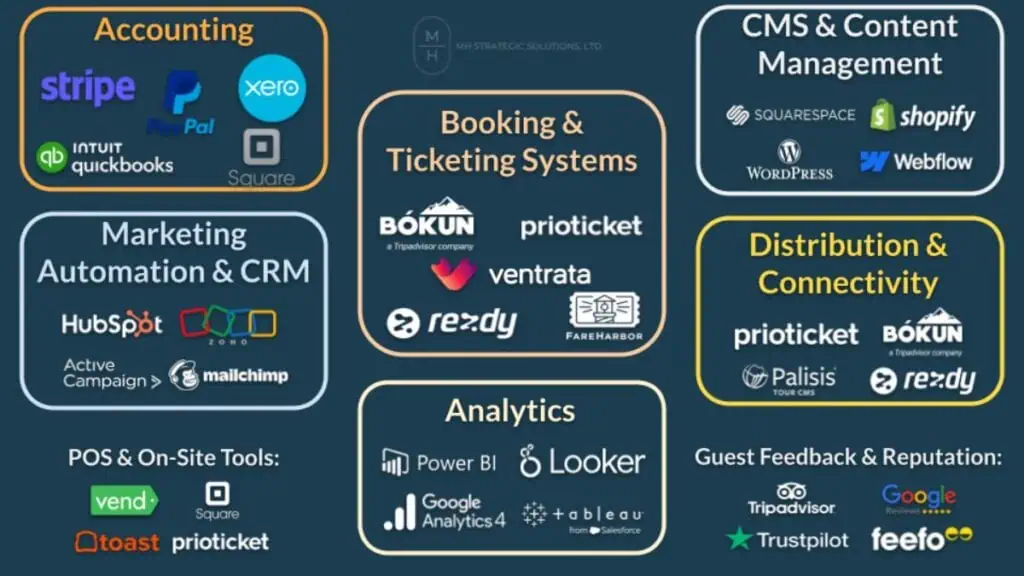
Reporting & Business Intelligence: From Data to Decisions
Data is only powerful if you can see it, and act on it.
Many operators are stuck with spreadsheets, unable to access real-time insights. With the right Business Intelligence (BI) environment, you can make faster, more informed decisions across product development, marketing spend, pricing strategy, and resource allocation.
Data Analytics & Business Intelligence
What you need:
- Custom dashboards to track key performance indicators (KPIs) such as booking trends, customer satisfaction, and operational efficiency.
- Drill-down capability from macro trends to guest-level detail.
- Alerts and anomaly detection so you know when something’s off before your guests do.
- Market analysis & forecasting to track industry trends and customer preferences, and assist in demand planning and pricing optimization.
Smart operators use BI tools as part of their daily rhythm, not just end-of-month or annual reviews.
Stay up to date on industry and consumer trends: Arival research is designed to help operators track industry trends and traveler preferences. Check out Arival’s Global Operator Landscape and Experiences Traveler studies, our latest article on travel trends, and get on the newsletter list to be the first to hear about the latest traveler trends and tourism industry insights we’re tracking.
Reduce Complexity & Contain Costs: Clean Up, Modernize, Save
Modernizing or building your tech stack starts by assessing your current tech, identifying redundancies, and weighing true ROI, according to this recent article in Forbes. Legacy systems hamper flexibility and become costlier to support as skillsets leave.
Cloud-Based Booking Solutions
By migrating from monolithic, outdated technology to modular, cloud-native architectures reduces complexity, accelerates scaling, and cuts long-term costs. This is exactly the approach that separates resilient, future-ready operations from legacy-bound ones.
Modern platforms are built on:
- API (Application Programming Interface): A way for different software systems to connect and exchange data seamlessly.
- Microservices: An approach to building software as a collection of small, independent services that work together.
- DevOps: A set of practices that combines software development and IT operations to automate and shorten the systems development lifecycle.
Why Investing in Your Tech Stack Matters
Arival’s research on the State of Experiences revealed that nearly 40% of tours and activities operators globally lack modern reservation systems, even as OTAs drive one-third of bookings. Guest complaints at visitor attractions in particular frequently centre on crowding and tech failures, as attractions are lagging in tech and connectivity.
Future-Proofing Your Technology Stack
Without a modern, connected tech stack, you risk:
- Limited discoverability and reduced direct bookings.
- Manual operations and rising staff costs.
- Lower satisfaction and fewer repeat visits.
- Hindered measurement and inability to scale.
Emerging Travel Tech Innovations
As travel technology companies continue to innovate and develop new tech for tour operators, activity operators and attractions, it’s important to regularly re-evaluate if there are opportunities to improve your tech stack. For example, some recent emerging technologies include:
- Virtual and augmented reality (VR/AR) tools for immersive experiences, including enhancing self-guided tours and audio experiences.
- AI-powered automation tools for tour customization, personalization and guest communication.
- Dynamic pricing tools with AI enhancements for optimizing profitability at peak periods and bolstering bookings in softer seasons.
By building a modular, API-first, data‑driven stack, you gain speed, agility, insight and profit, all while avoiding vendor lock-in and costly technical debt.
Final Thoughts: Build It to Scale, Not Just Survive
The smartest tech stacks are modular, open, and future-facing. I often speak with operators and offer this reassurance. It’s not about having the most tools, it’s about the right tools which work together seamlessly. This will ensure you can enhance your guests’ and your team’s experience no matter which side of the box office they are on.
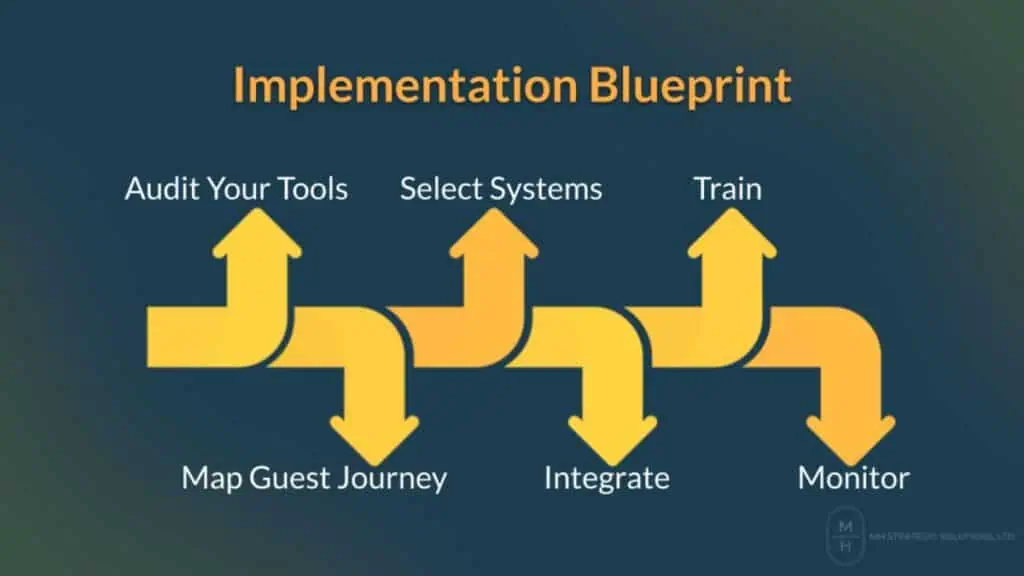
Scalability & Integration Strategies
Remember… Start with a clear strategy. Understand your guest journey, map your commercial goals, and build (or rebuild) your tech environment around that. Prioritise open APIs for simplicity and cost, scalability, and to meet your goals. Choose partners who understand your industry, not just generic software vendors or the one everyone uses. Keep in mind your product, guest experience and messaging are unique to you, and as such your tech needs will differ from your competitors. In other words, the best tour operator software is the one(s) that work together best for you.
At the end of the day, the goal is simple: empower your team, delight your guests, and create a business that’s not just fit for today, but ready for what’s next.
About the Author

Martin Harlow is an expert in distribution strategy and connectivity, who has held multiple senior leadership roles in well-known hospitality brands. A regular speaker at Arival, Martin is Managing Director of MH Strategic Solutions Ltd., offering expertise and consultancy support to the industry in the field of distribution, connectivity strategy and technology implementation.
What’s Next in Tech for Travel Experiences?
Join us at Arival 360 | Washington, DC to learn from industry leading experts and thought leaders, including tech and distribution expert Martin Harlow. We’ll discuss the future of travel experiences tech, distribution strategy and experience design, with many practical sessions on marketing, technology, business strategy, AI and more.
Become an Insider Pro Access member today and get access to the full library of Arival research, plus many other benefits such as free consulting sessions, special discounts and 20% off in-person events, starting from $179 per year.
Sign up to receive insights tailored for the in-destination industry as well as updates on Arival.

